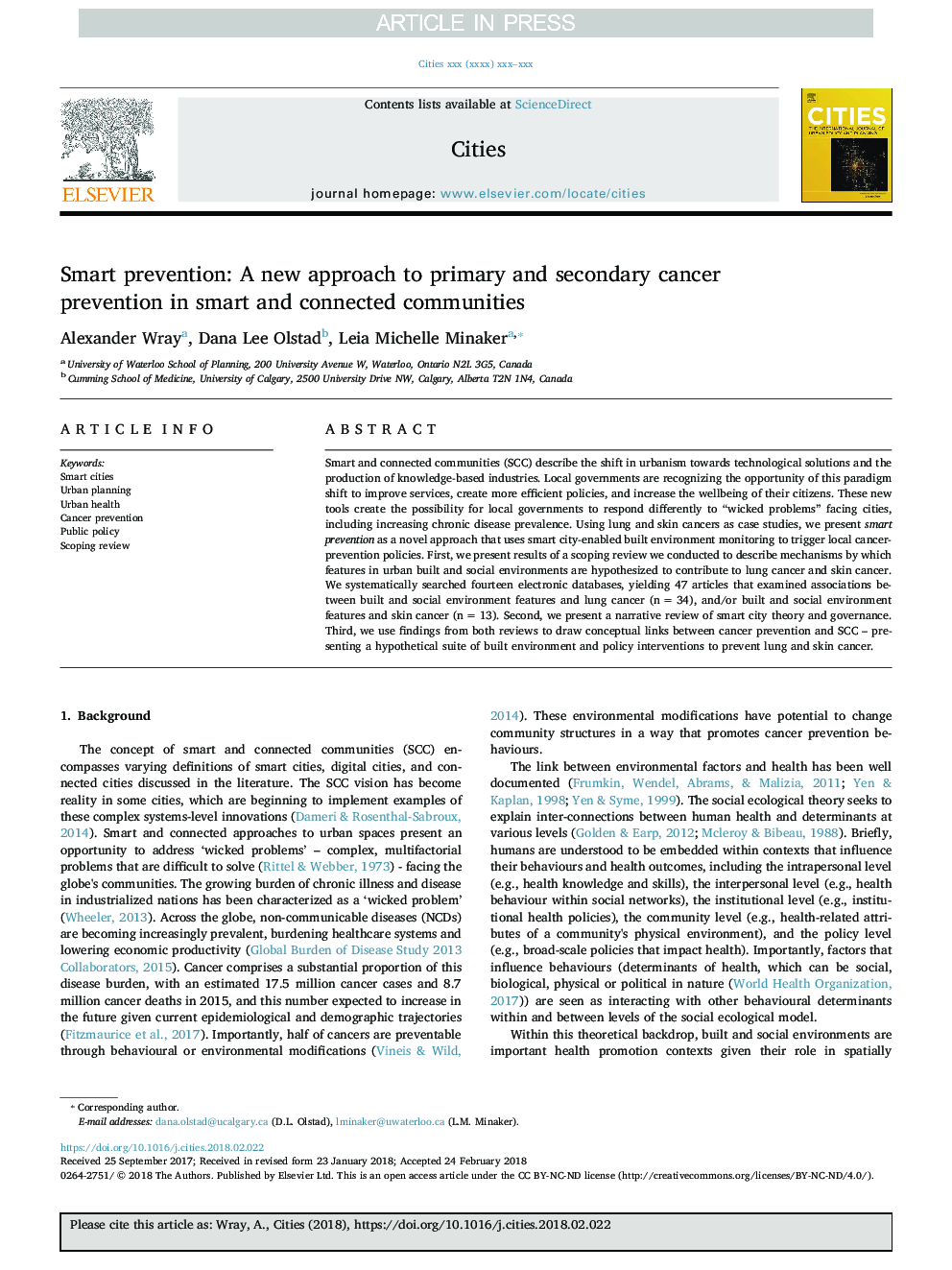| Article ID | Journal | Published Year | Pages | File Type |
|---|---|---|---|---|
| 7417083 | Cities | 2018 | 17 Pages |
Abstract
Smart and connected communities (SCC) describe the shift in urbanism towards technological solutions and the production of knowledge-based industries. Local governments are recognizing the opportunity of this paradigm shift to improve services, create more efficient policies, and increase the wellbeing of their citizens. These new tools create the possibility for local governments to respond differently to “wicked problems” facing cities, including increasing chronic disease prevalence. Using lung and skin cancers as case studies, we present smart prevention as a novel approach that uses smart city-enabled built environment monitoring to trigger local cancer-prevention policies. First, we present results of a scoping review we conducted to describe mechanisms by which features in urban built and social environments are hypothesized to contribute to lung cancer and skin cancer. We systematically searched fourteen electronic databases, yielding 47 articles that examined associations between built and social environment features and lung cancer (nâ¯=â¯34), and/or built and social environment features and skin cancer (nâ¯=â¯13). Second, we present a narrative review of smart city theory and governance. Third, we use findings from both reviews to draw conceptual links between cancer prevention and SCC - presenting a hypothetical suite of built environment and policy interventions to prevent lung and skin cancer.
Related Topics
Social Sciences and Humanities
Business, Management and Accounting
Tourism, Leisure and Hospitality Management
Authors
Alexander Wray, Dana Lee Olstad, Leia Michelle Minaker,
